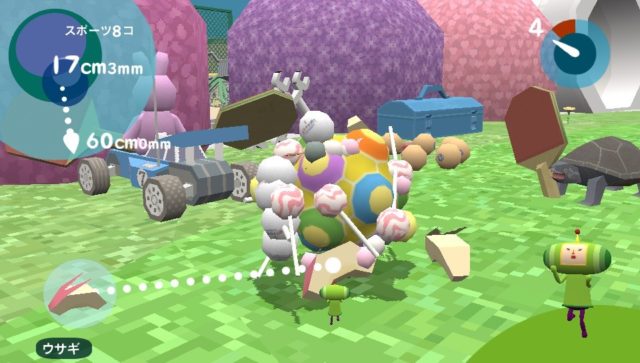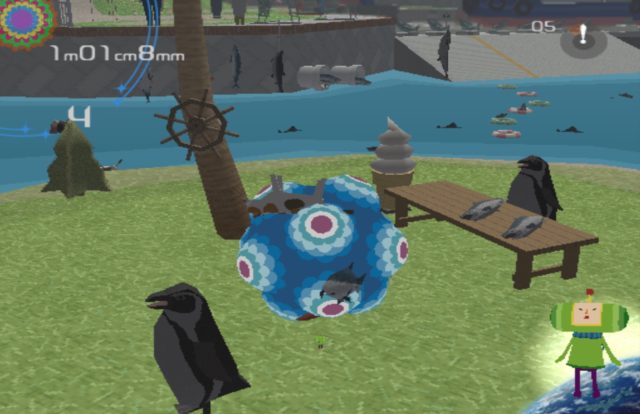Bravely Default: Where the Fairy Flies
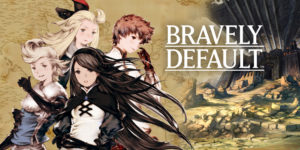
Description
Bravely Default: Where the Fairy Flies, titled Bravely Default: Flying Fairy in Japan, is a Nintendo 3DS Role-Playing game originally exclusively released in Japan. It is considered by the publishers to be a spiritual successor to Final Fantasy: The 4 Heroes of Light, having the same initials as Final Fantasy with Flying Fairy and its job system has been compared to that of Final Fantasy V.
In this game, you control Tiz, a young boy who just lost his brother in an accident. He meets Agnes, who is on her way on purifying crystals to prevent the very same accident from happening again. Together, they embark on a journey, meet new friends, forms a party of 4 and saves the world…. Or what they were led to believe.
The story follows the archetype of the current Square Enix games, revolving around the central theme of crystals. While it is not terribly unoriginal, its execution is what makes it stand out from the other 3DS games. It is delivered mainly through voiced dialogue which helps in bringing the character alive and the choice of music is apt in expressing the mood of the situation during the tide of battle (The soundtrack becomes a indicator of how long your special move lasts).. The cues are also well placed, from new encounters, intense battle to sad partings.
When this music plays, you will automatically know it’s a boss fight
Lens of the Hero’s Journey
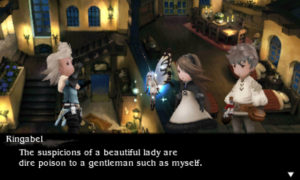
Screenshot: One of the many light-hearted banters ingame
Bravely Default follows the standard fantasy archetype where, based on Vogler’s synopsis of the Hero’s Journey, it contains clichés like but not limited to
- Ordinary World- Tiz was living the normal village life
- The Call to Adventure- A disaster strikes, breaking his everyday life
- Tests, Allies, Enemies- Tiz faces challenges, makes allies and explores the world
- The Road Back- Tiz completes his mission but it isn’t truly over yet.
What starts off as a stereotypical story, slowly evolved into more than just any other fantasy story. The party of 4 began as one-dimensional characters but as the story progresses, their characters were fleshed out and developed beyond their initial archetype.
The game also contains
- Mini-dialogues that gives more insight to the everyday lives of the party and their relationships, making you feel more connected to them emotionally.
- Side-quests with a unique way of storytelling, they were even able to flesh out the side characters, giving a different perspective than when the main party first encountered them. Villains are not simply enemies to defeat and have their own worries and motives
Bravely Default slowly transforms its story from the standard good-vs-evil to a point where there is no clear line between good and evil. This lens meshes very well with the next lens that I will talk about.
Lens of Interest Curve
Through the usage of the structure provided by the Hero’s Journey, the interest of the player is sustained very well (at least, in the first few chapters). Being on a journey, the party will
- Encounter towns
- Meet new characters including the villain
- Solve problems along the way of the main quest
- Explore dungeons and defeat the villain
- Achieve a milestone of the main goal and unlock new powers, all in one chapter.
The story presents itself in arcs and the interest slowly builds up with the suspense creeping up, with the villain’s occasional appearances, leading up to the final boss fight. In between chapters, they take detours to rest or power up, providing a respite of tensions. After every chapter, it is a whole new chapter but with a growing backstory of the main ‘evil’ organization making its moves in response to the party’s movements. This rollercoaster ride helps in retaining the player’s attention by giving both periods of rest and peak, with a grand finale to top things off.
However, Bravely Default overuses this formula in its later chapters. It suffers from what most Japanese RPGs have a problem in. A grinding process. In the second half of the game, the plot comes to a standstill and the player is forced to repeat similar events multiple times. A rollercoaster ride is fun but when rode too many times, it turns displeasing. Still, to its credit, Bravely Default stuck true to its world-building and even the repetitions have variations (or easter eggs) to help the player tide it over
Lens of Simplicity and Complexity
Partly what contributed to Bravely Default’s success is its job system. Each character (in your party of four) has access to the same 24 jobs, each with a slight inclination to certain jobs but not limited to. At any point of time, only 2 jobs can be equipped at the same time, one as a main, the other as a secondary.
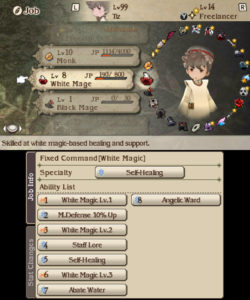
Screenshot: A overview of the job White Mage in the job selection wheel
A job itself is simple and focused on achieving a specific role, say White Mage is specialized for healing, Black Mage is specialized for offensive magic. As the player can freely mix-and-match the jobs, he is given the tools to come up with different strategies according to the natural synergies of the classes, rather than being force-fed them like a traditional RPG (where the heroes comes in a set class).
The battle system is also straightforward, with the typical actions and elements you can find in an RPG. An interesting feature would be its Brave and Default systems. By Defaulting, you skip your turn while defending, gaining a Brave Point. By Braving, you spend Brave points to gain an extra turn. You can also go into a deficit, when you use your future turns in one go, allowing one to strategize. Do I bide my time or do I go all-out, risking vulnerability if I fail to defeat the enemy.
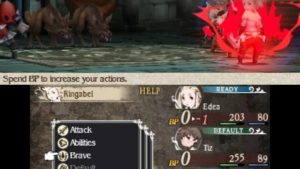
Screenshot: Brave in action
This is where the emergent complexity kicks in.
- Different combinations of the jobs to explore allow one to experience many styles of gameplay. Within the jobs are a separate different combination of passive skills to equip as well. There are the general builds and there are niche ones like an ultra-defensive White Mage+Knight or an all-or-nothing Dark Knight+Monk.
- Jobs (and their respective skills) are earned on a gradual curve, thus the player is not overwhelmed with the whole 24 jobs in one go. The more I play, the more the game unlocks new possibilities for me, encouraging me to play even further.
- The Brave and Default system is easy to understand and the game introduces more layers of complexity when enemies begin to use and abuse the same system. They become smarter, being able to take advantage of your usual strategies, forcing you to rethink and try different fighting styles.
Lens of Freedom
The version of Bravely Default I played was the updated version, where additional system controls were open to the player. Normally in traditional RPGs (like Final Fantasy or Pokemon), when the player wants to avoid or induce battles, they can only do so through special items that influence the encounter rate. Bravely Default allows you to adjust that rate directly without the silly process of buying those items (begone Repels and Honeys!). This freedom to purely enjoy the story or when to grind for the upcoming boss fight (which is made unskippable), is what I feel most games should have innately without a paywall.
Although the story is linear, and progression is one direction at the start, like its spiritual successor, Final Fantasy, the ability (or rather desire) to backtrack is unlocked past a certain point of the game, with fast travel.
Lens of Surprise
Last but not least, what captivated me was the plot twists of this game. Bravely Default comes with multiple surprises on various levels.
- Villains are not just your stereotypical pure evil villains. Their backstories and motivations are only revealed when you venture out of the main quest line
- Details of previous disasters or past events show up, providing an insight as to the current events happening
- Open Secret. The biggest plot twist was already shown right at the start without the player noticing it.
Saying any more would mean spoilers. :p

